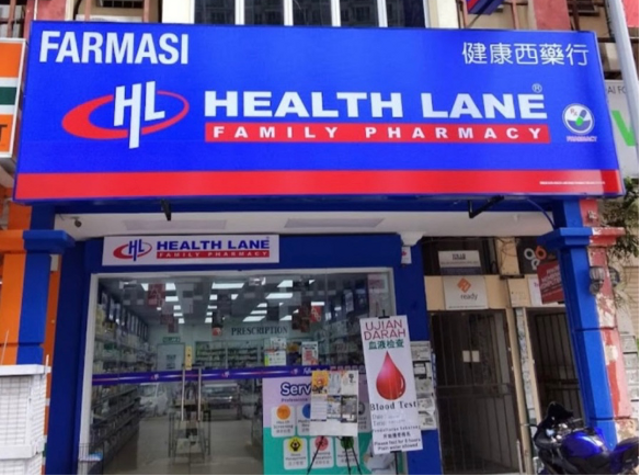Tentang KamiPedoman Media SiberKetentuan & Kebijakan PrivasiPanduan KomunitasPeringkat PenulisCara Menulis di kumparanInformasi Kerja SamaBantuanIklanKarir
2025 © PT Dynamo Media Network
Version 1.101.0
Konten dari Pengguna
Communication in Pharmacy: Types, Challenges, and Best Practices
15 Desember 2024 18:24 WIB
·
waktu baca 4 menitTulisan dari Amirah Humaira tidak mewakili pandangan dari redaksi kumparan
ADVERTISEMENT
Communication is very important, especially in healthcare. In a pharmacy, information is exchanged between the pharmacists and the patients in which it directly impacts the safety of patients, along with their overall health outcomes. The pharmacy the student examined was Health Lane Pharmacy in Shah Alam, Malaysia. In this report, the various aspects of communication, its importance, challenges and best practices will be discussed.

First and foremost, there are three types of communication in healthcare, namely verbal, non-verbal, written communication. In the pharmacy, the student witnessed the pharmacist engaging in verbal communication with an elderly patient, in which the pharmacist directly spoke with the patient in a gentle but firm manner. The pharmacist explained the prescription of medicine and also answered the patient’s questions about how to take the medicine and its potential side effects. Furthermore, another example of verbal communication observed by the student was when the pharmacist delegated the task to a staff member to prepare a patient’s prescription and ensure the label was accurate. It is clear that effective communication is vital, as it builds trust with patients, while also ensures efficiency in the workplace and promotes a positive working environment among the staff.
ADVERTISEMENT
Next, is non-verbal communication. It refers to the usage of body language, facial expressions and gestures to relay information to a person. This type of communication is mainly used to improve understanding. The student observed the cashier at the pharmacy maintaining eye contact, while also smiling when serving the patient which creates a welcoming environment. Another instance of non-verbal communication used was observed by the student when the pharmacist was nodding to a patient while listening to their health concerns, and this indicates an understanding or sympathy to what the patient was going through. The pharmacist also used simple gestures while pointing to the medication instruction, to clarify any doubts or questions from the patient.
ADVERTISEMENT
Written communication is perhaps the easiest form of communication to recognize. Not only is it crucial to convey clear, accurate information, but also it provides reference for both patients and healthcare staff. Prescriptions, medication labels, patient information leaflets and internal records are examples of written communication. It is important that prescriptions have no errors, and it must be clarified to avoid adverse effects to patients. The dosage and frequency must be correct for the safety of patients. Labels are also essential so patients will recognize the medication they are supposed to consume, and not accidentally taking the wrong one. On the other hand, the leaflets explain how to use the medication, its potential side effects and storage condition. The leaflets are also very helpful for patients that may forget verbal instructions from the pharmacist or staff. Furthermore, the pharmacy maintains written records of the prescriptions, inventory and patient history for legal compliance.
ADVERTISEMENT
It is undeniable that communication is crucial in any healthcare setting, especially in pharmacies. Quality patient care requires effective communication between members in the pharmacy. When communication is ineffective, it can lead to delays and errors in treatment, which will harm the patient. Therefore, members in a pharmacy must work together to ensure communication is clear.
One of the challenges of effective communication is language barriers. Some patients may not speak the same language as they come from different backgrounds, and this might make relaying the information to them quite difficult. It is up to the pharmacists and staff to be patient when explaining the medication to the patient while also showing empathy with their situation which will foster trust and understanding. Furthermore, medical jargon should be avoided, instead use simple but clear words when explaining to help patients them understand better. The student observed that the pharmacist was able to relay information to a patient which spoke little English, but with patience and simple gestures was able to accomplish the task.
ADVERTISEMENT
The SBAR communication tool is a great way to improve communication in the pharmacy setting, which helps in clear and concise information exchange. It stands for Situation, Background, Assessment and Recommendation. Situation refers to what is the current issue with the patient. Meanwhile, background provides information to offer context, such as patient history, along with their signs and symptoms. Next is assessment in which the pharmacist shares their professional assessment or observations about the issue. Lastly is recommendation, in which the pharmacist suggests a course of action to address or resolve the issue. Overall, the SBAR technique helps to ensure efficient problem solving, while also ensuring healthcare professionals have the information to make informed decisions.
In conclusion, communication is pharmacy plays a very crucial role to ensure safety of patients, while also builds trust between patients and healthcare providers.
ADVERTISEMENT

